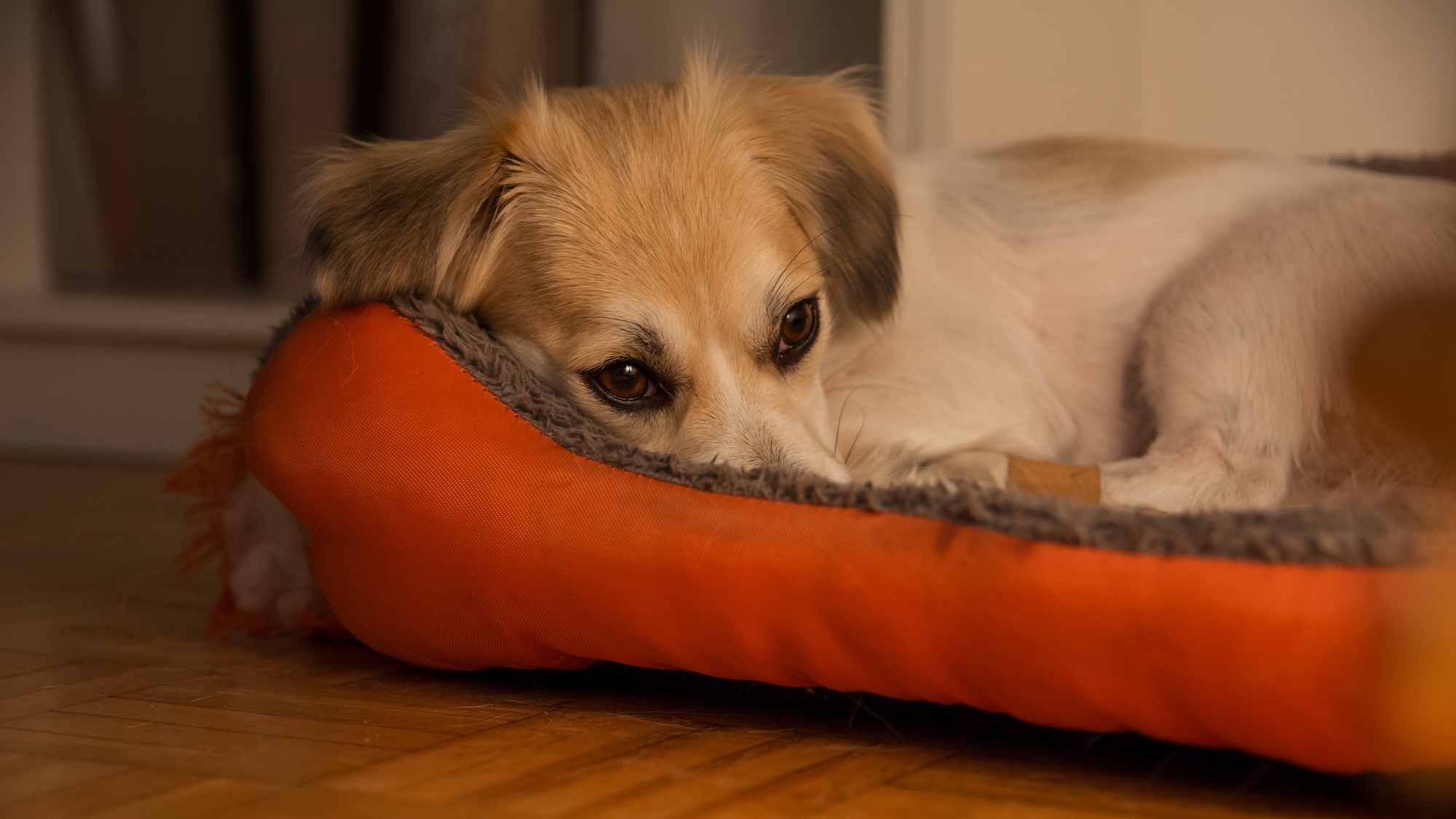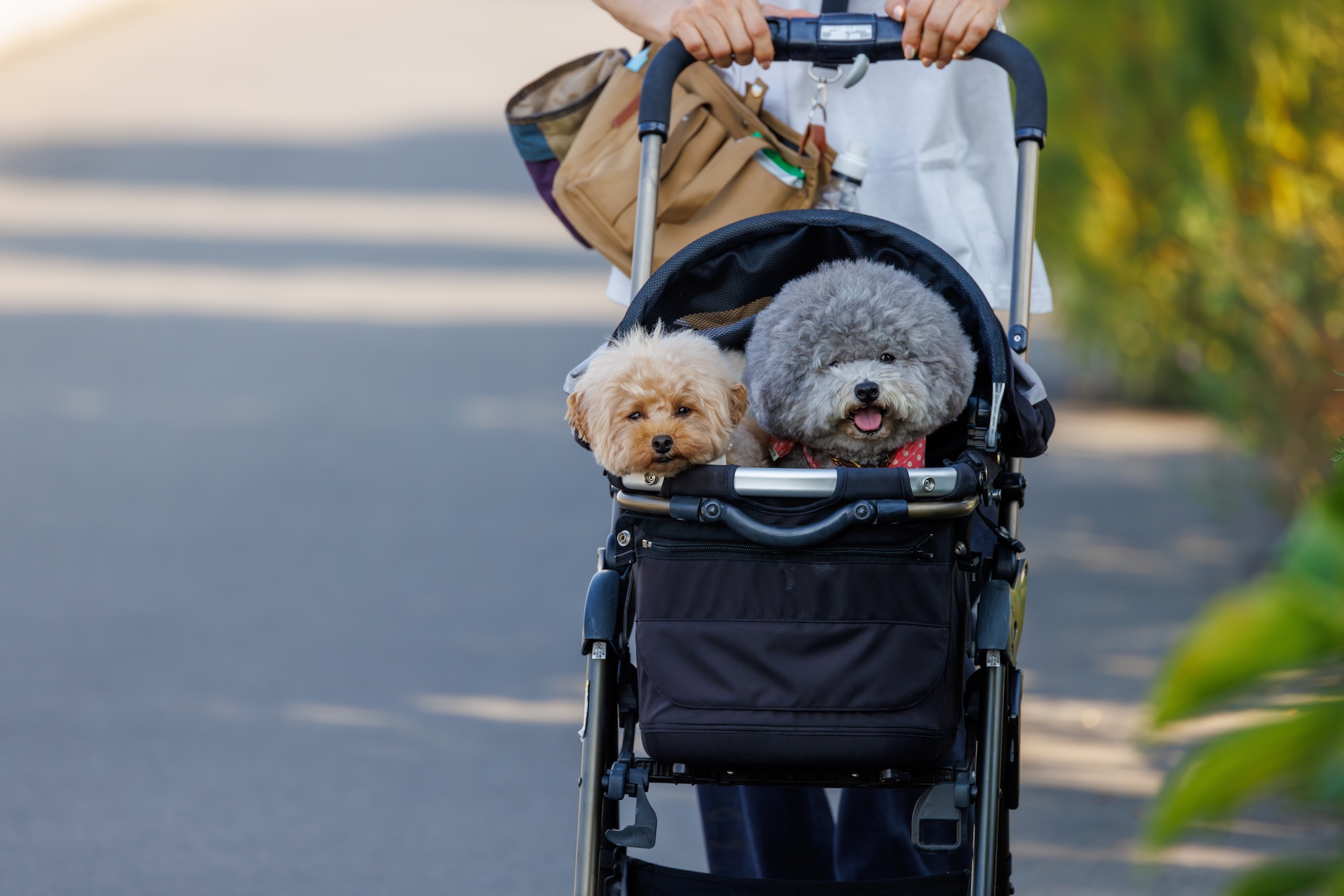A big part of being a responsible dog owner is teaching our dogs to have good manners. But it’s hardly fair to put all the responsibility on your dog for your interactions out in the world. As dog owners, we have a role to play in maintaining good dog-human relationships, ensuring that our dogs are behaving like good neighbors, and that we’re acting as ambassadors for dogs and dog ownership.
Here are some etiquette basics that will allow you and your dog to go more places and have more fun together while keeping other dogs and people safe and comfortable.
Do curb your dog
Let’s start with the basics. When walking your dog, whether on city streets or in a quiet neighborhood, it’s polite to keep your dog to the curb side of the sidewalk. Specifically, you want to keep your dog out of people’s doorways, yards and gardens. No one wants to walk out of their door and right into a puddle of pee. And dogs peeing in people’s yards can result in brown spots and dead grass because of the level of nitrogen in their urine. Dogs can also easily trample fragile plantings and flowers which isn’t likely to impress your neighbors. For many reasons, it’s a good idea to train your dog to do their business in one or more go-to spots (away from lawns and building entrances). To help your dog stay curbside, praise, reward and encourage when they go potty at the curb or other designated spot instead of in people’s front yards.
Do scoop the poop
It should go without saying, but anytime your dog poops somewhere that isn’t on your private property you need to scoop the poop immediately. Dog poop when left behind is unsightly and can spread disease to dogs and people. Be sure to carry poop bags at all times on walks (carry more than one for that surprise second #2) so that you can clean up after your dog and appropriately dispose of the doo-doo.
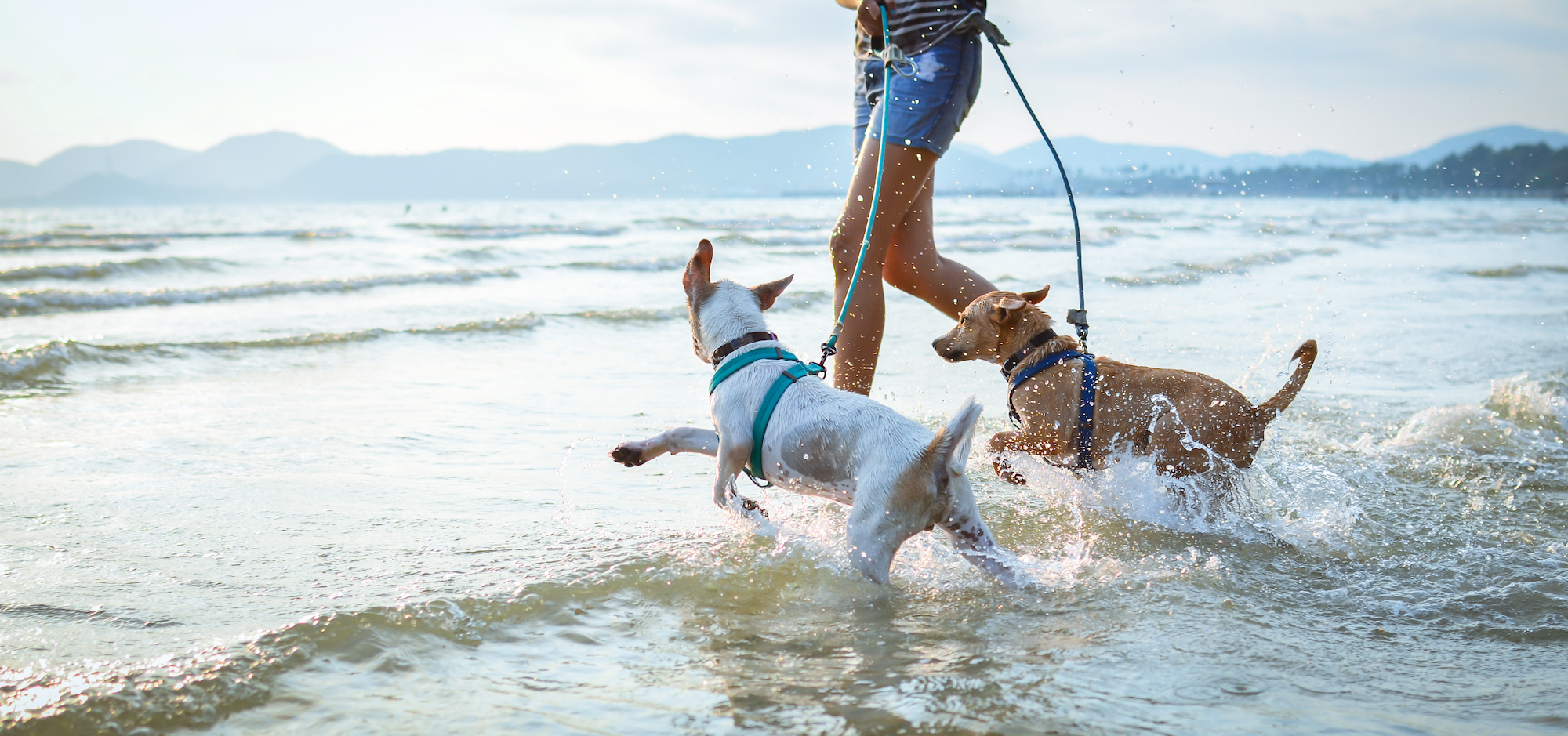
Do obey leash laws
Following your local leash laws is important not only for your dog’s safety, but also for the safety and comfort of other dogs and people in the community. Many dogs, and people, are uncomfortable with being approached by dogs. Even if your dog is friendly, not all other dogs are, and not everyone wants to meet your dog. Additionally, many parks and recreational areas have fragile ecosystems of plantings and wildlife that can easily be harmed by off-leash dogs. The key to keeping locations friendly to dogs means respecting the rules that have been put in place in local parks and recreation areas so they can be accessible for everyone, dogs and people alike.
Don’t leave dogs unattended
Always make sure that if you go on a walk with your dog that you’ll be able to stay with them the entire time, or that you have someone trustworthy with you who can watch your dog. Do not tie your dog up outside a business that is not dog-friendly like a coffee shop or store. Even if you are just running in for a couple of minutes leaving your dog outside alone unattended can put your dog at serious risk. Dogs left tied up can easily be stolen—it’s estimated that approximately two million dogs are stolen each year in the United States. Leaving your dog alone outside also leaves them vulnerable to being harassed or mistreated by people passing by when you aren’t there to supervise interactions. It also creates the unnecessary risk of your dog snapping at a child or other person who tries offering unwanted attention.
Do be wary of dog runs (or, better, avoid them entirely)
This sounds like a tough one. After all, off-leash time running around with other dogs is the best reward for your dog isn’t it?
It’s true that off-leash play time is gold for dogs, but the dog park often isn’t the best place for that play to happen. Some dogs enjoy playing with other dogs but many trainers encourage people to avoid dog runs and off-leash dog parks completely. Dog parks pose significant risk of disease and injury because the dogs in attendance are of unknown temperament and behavior. Compounding the problem, dog parks are often a place where owners adopt a hands-off approach, unleashing their dogs and then just letting them do what they will. As a result, it’s very easy and common for fights to take place. If your dog is social and enjoys being around other dogs it’s much better to coordinate regular play dates with dogs you know have a similar play style. Arrange for play dates to take place in a fenced yard or book time in a dog training facility for the well matched dogs to play safely together.
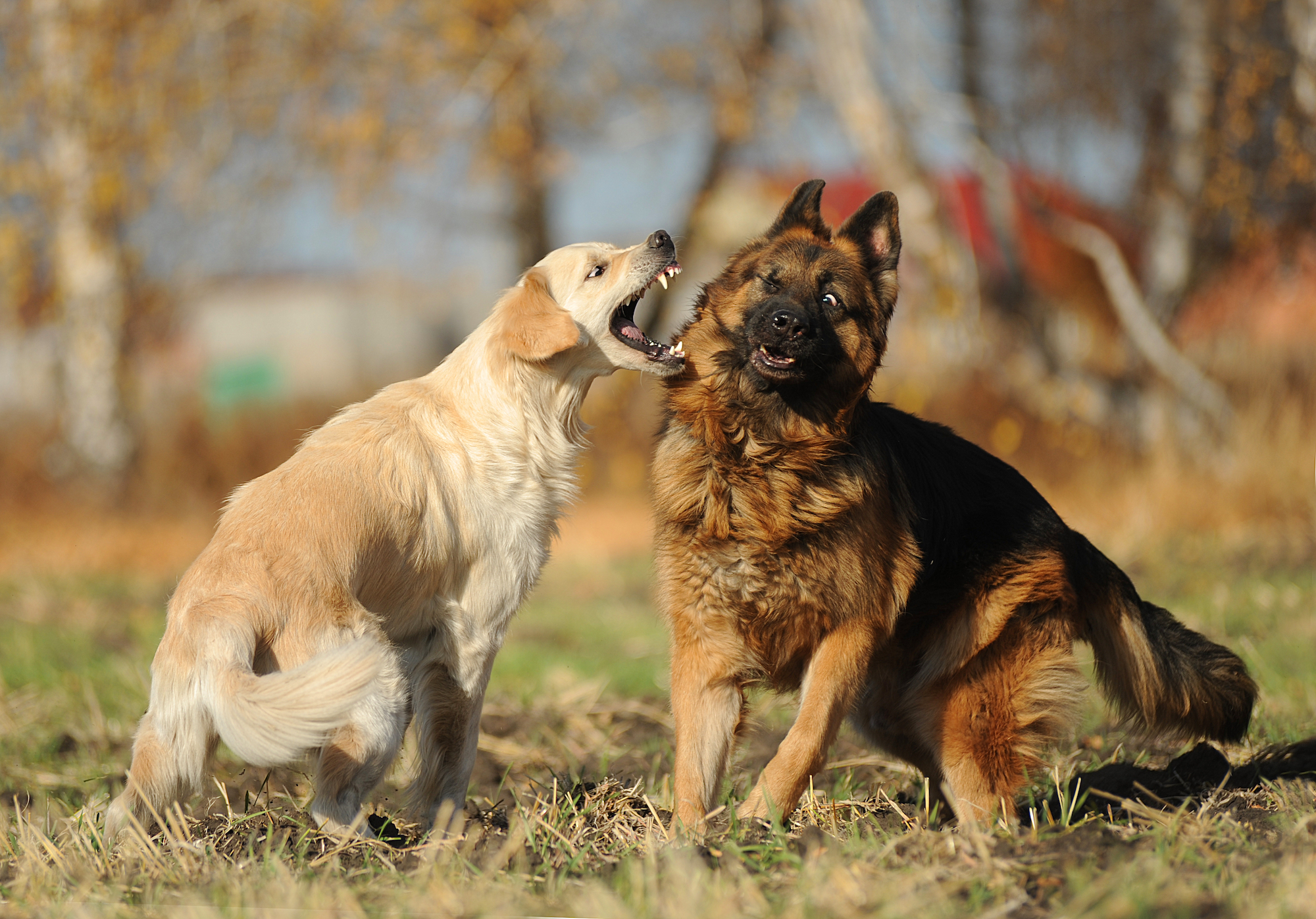
Don’t allow dogs to approach others without an OK (Yes, we know “he’s friendly!!”)
As a dog guardian it’s your responsibility to not only keep your dog safe, but to help them make good decisions—and that means not approaching others unless invited. Don’t be the person who calls out “my dog is friendly” as your off-leash dog bounds toward strangers and their leashed dogs. These interactions might seem harmless to you but can be extremely upsetting to people who have dogs who need space, are reactive, or recovering from injuries.
Many dogs and people are simply not comfortable being approached by a strange dog, so this etiquette tip is about being considerate. But setting rules around approaching others will also make your time out walking more enjoyable. If you set the precedent that your dog can or should greet everyone, your dog will likely pull towards everyone regardless of whether or not the dog or person is interested in meeting. To prevent this behavior, reward your dog for watching you when you are passing dogs or people; this helps your dog to understand that looking at you is a desired behavior. This will build value for your dog in being near you, and soon, looking at you when they see a dog or person will become a default behavior. When/if there are dogs and people who wish to say hello to you, you can invite your dog to do so in a controlled way that is safer and more comfortable for everyone.
Don’t stare!
When you and your dog are out on walks, pay attention to what they are watching and interrupt prolonged staring. Staring can be upsetting to other dogs and is generally just rude canine behavior. Especially if your dog’s body is stiff, you want to be sure to interrupt the stare, distract your dog by moving along, or use treats to reposition your dog to face you. Staring is particularly problematic in tight places like at vet offices, crowded sidewalks, and outdoor cafes.
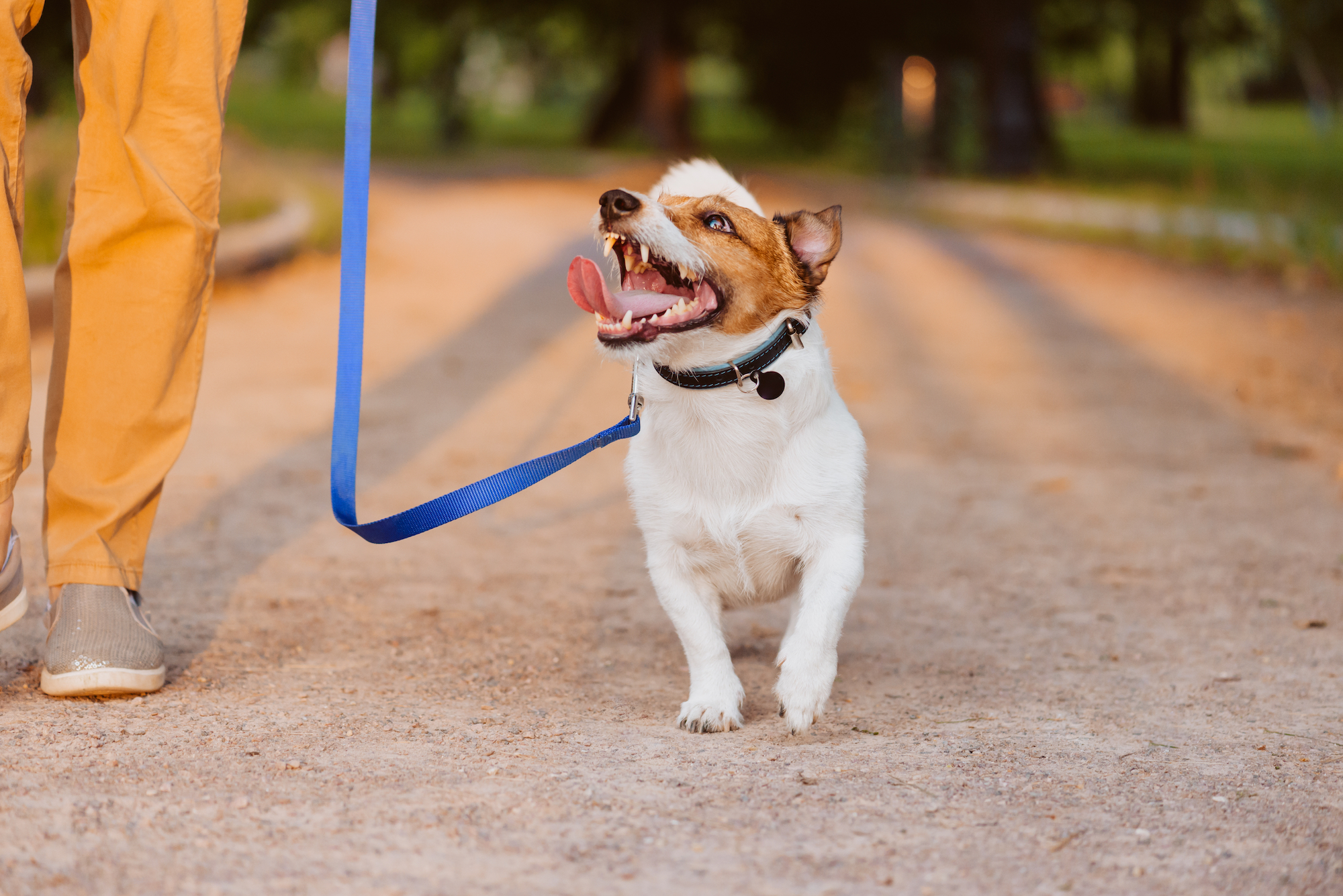
Do train! Early, and often.
A good general rule is a trained dog is a happy dog. Dog training is fun; it’s about finding ways to learn to speak your dog’s language, and to better communicate with each other. When you train your dog using methods that include rewarding with treats, praise, and toys, you are building up your relationship with your dog which will make your walks more fun. Even if your dog knows “the basics,” continuous training can help establish boundaries that can help them deal with all kinds of street situations appropriately.
Do pay attention
Be sure that the time you spend with your dog when out on walks is quality time. Put your phone away. Try not to worry about emails or posting to Instagram (no matter how good the light) and instead focus on your dog. Walks are a fantastic time to engage your dog in training games. They are also a chance to learn more about your dog and what experiences, smells and sights they find most interesting.
